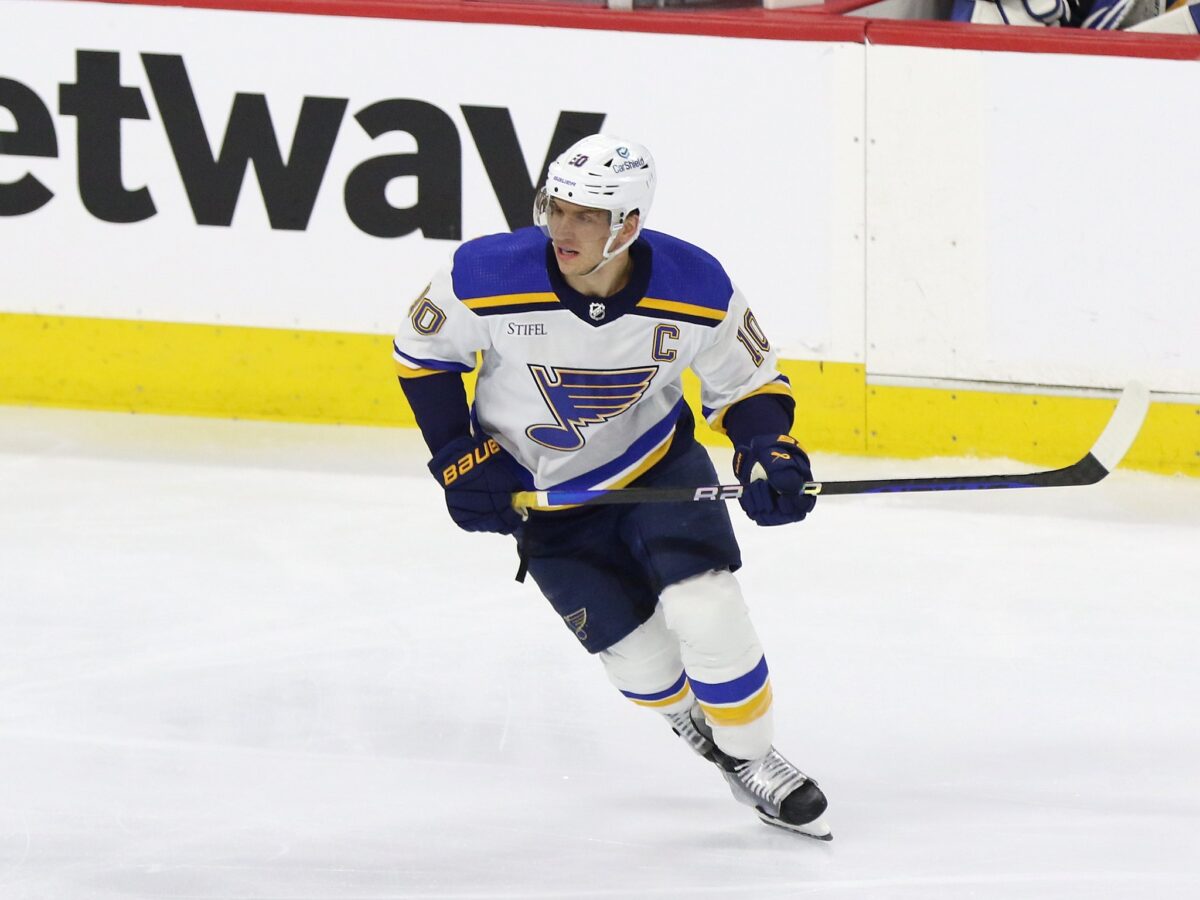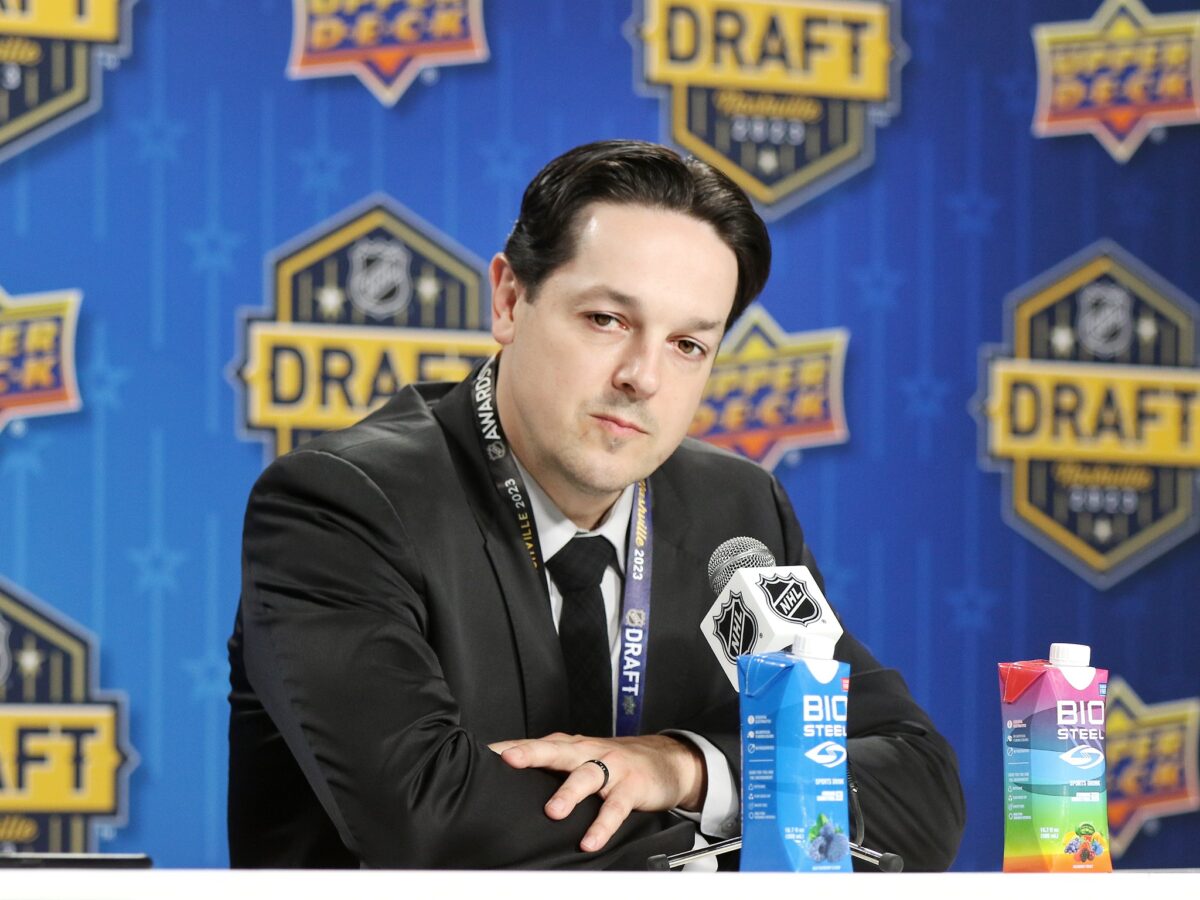Despite taking one at 13th overall in the 2024 NHL Draft, the Philadelphia Flyers have one glaring weakness as they look to close their rebuilding chapter: their centers. For their current roster, they have a modest-at-best core with every single one of them being over the age of 24. For their prospects, they have Jett Luchanko (who they just drafted) and a bottom-six projectable Jack Berglund, but that’s really about it.
Contradictory to what you might hear from outside sources, the 2023-24 Flyers were not a fluke—they nearly made the postseason because of their 5-on-5 dominance even with a lack of talent. But they have (at least some of) the talent now. So, following a last-day-of-the-season playoff miss in their prior campaign, we can assume the Orange and Black return back to that territory again. At least, that seems like their logical standing.
Related: How the Flyers Stack Up Against the Metropolitan Division in 2024-25
While it’s a breath of fresh air to have competitive hockey in Philadelphia again (as opposed to the dreary on-ice quality in the latter half of the 2020-21 season through 2022-23), we must also consider the downside of this. It’s not exactly easy to draft high-quality centermen when you’re as good as the Flyers are. Generally speaking, that talent starts to fade after single-digit overall selections, so the situation here is simple: the Orange and Black probably won’t be drafting many stars down the middle.
This sounds bad, right? A team that desperately needs centermen, perhaps the most coveted and expensive position in the sport, does not have the means to get them very easily. Even the front office agrees with this much.
Be warned, my personal idea on how they attack this is just that: an idea. But it also seems par for the course regarding what the organization has said and done since the “New Era of Orange” regime began around the spring of 2023. To me, the Flyers should (and will) operate like the St. Louis Blues toward the late 2010s and get their top centers the old-fashioned way: trading.
Blues’ Schenn & O’Reilly Trades Propel 2019 Stanley Cup Win
The Flyers in particular know all about the Blues’ aggressiveness to win a championship, seeing as they made it all possible. Plus, St. Louis had a similar structure to the Orange and Black of today, specifically regarding their abundance of talent on the wing. To put those wingers over the top, they splurged on two centers even though the cost was ridiculously high.
First, at the 2017 NHL Draft, the Flyers said goodbye to 25-year-old top-six center Brayden Schenn. And, really, it’s not like they had a choice here. Offered the 27th overall selection (Morgan Frost), a first-round pick in 2018 (Joel Farabee), and Jori Lehtera to make the salary cap play out smoothly, general manager (GM) Ron Hextall took part in opposing GM Doug Armstrong’s game. It was one that actually paid off for Philadelphia—they drafted two top-six talents of their own.

But this was only the first part of Armstrong’s plan. After missing the playoffs in 2017-18, he doubled down by sending prospect Tage Thompson, a 2019 first-round pick (Ryan Johnson), a 2021 second-round pick (traded), and cap dumps Patrik Berglund and Vladimir Sobotka to the Buffalo Sabres for one Ryan O’Reilly. Led by the latter and Schenn down the middle, it was time to strike.
The 2018-19 season for the Blues was one of the most shocking in history, holding the worst record in the league on Jan. 2, 2019 (37 games into the season) yet making the playoffs. Their unprecedented bounce back with young starting netminder Jordan Binnington shot them into the playoffs with room to spare—they caught fire in the last three months of the regular season. From there, the red-hot Blues continued to get hotter, winning the Stanley Cup.
It’s worth noting that O’Reilly and Schenn weren’t just bystanders here. The former led the team in points during both the regular season and the playoffs, won the Selke Trophy as the NHL’s best defensive forward, as well as the Conn Smythe for the most valuable player of the postseason. Schenn, on the other hand, finished third on the team in points and average ice time among forwards. St. Louis simply couldn’t have gone the distance without either of these bold moves.
That is especially apparent when you look at what they were working with back in 2016-17, a season where they won a playoff series. Rostering a center depth of Paul Stastny, Berglund, Lehtera, and Kyle Brodziak, this was just not a Cup-winning core—their offseason splurges were essential.
You might be able to see where I’m going with this already. But let’s go into some detail on how it applies to the Orange and Black.
Could the Flyers Take a Similar Approach?
The Flyers have a similar problem to the 2016-17 Blues. Matvei Michkov, Travis Konecny, Owen Tippett, and Tyson Foerster alone give Philadelphia high-end wing talent—there’s even more in the prospect pool. Cam York, Jamie Drysdale, and Oliver Bonk are hopefully your three defensive building blocks (more those first two but Bonk deserves a mention), while the goaltending is unproven but promising with Sam Ersson, Alexei Kolosov (unless that drama ends in a trade), Yegor Zavragin, and Carson Bjarnason.
So, just like with those pre-Schenn Blues teams, there is talent present. However, a center core of Sean Couturier, Luchanko, Frost, Berglund, Scott Laughton, and Ryan Poehling isn’t good enough to win a championship in a league that demands nothing but the best roster construction. Real upgrades have to be made here.
Now, I’m not suggesting the Flyers go after players as old as Schenn and O’Reilly. And I don’t expect this position to be fully addressed for a little bit, as the nucleus of the Orange and Black (Michkov) is a teenager—he’s 19 years old. As soon as the 2025 offseason, though, when more money is freed up à la Cal Petersen and Tony DeAngelo (buyout penalty), I envision some aggressiveness on this front.
But what does this aggressiveness actually look like? Well, it includes kicking tires on every single young, number-one center who has even the slightest chance of being available. Trevor Zegras (yes, he is very talented), Marco Rossi, and Robert Thomas have both been speculated trade bait in the recent past—these are players you’d be looking at. Even a long shot not reportedly on the market (Schenn really wasn’t, either) such as Matty Beniers would be very worth considering.
I have to make one thing abundantly clear here, aside from the fact that all of these four players seem poised to stick with their teams: it would be expensive to pry them away. The cost for the Blues to get O’Reilly was not cheap, as we’ve already established. Even Schenn cost them a pretty penny when he was only a high-end second-line player. In this league, the best centers do not come free of charge—be prepared for multiple first-round picks and even a roster player (Farabee or Frost, most likely) to be the price.
This is all just speculative. But in this hypothetical world where a young center was available, the Flyers should be okay with parting ways with many key assets—even “overpaying” on the surface. Even with three first-round picks in 2025 (their own, one from the Colorado Avalanche, and one from the Edmonton Oilers), you’re looking at a slim chance any one of those picks has a better career than Schenn, for example.
To make the most of Michkov and the other bright young stars in the making, you must be assertive at this stage. And I think GM Danny Briere knows this. Without a big upgrade to the current center core (which is unlikely to be done through the draft), there just won’t be a single season where the Orange and Black have legitimate Stanley Cup aspirations even when some of their prospects reach the NHL. Again, the Blues showed that two centers are sometimes all it takes.

I don’t think Briere had the justification to go out in the 2024 offseason and be hyper-aggressive. He’s a second-year GM whose team missed the playoffs. But if his club sustains their promising play or one-ups it, he’ll know he has something, especially now that Michkov is a part of the process. Running back what is essentially the same roster yet again in 2025-26 wouldn’t cut it if the Flyers prove they didn’t “fluke” their way into a good 2023-24 campaign. The time to strike is next summer.
If the Flyers prove to be competitive again this upcoming season, I expect some decisiveness next offseason from Briere. He has the resources at his display to rid of the albatross that is the center depth. Acting on it will be his duty if the team enters 2025-26 with bigger hopes and dreams.
Having Michkov this upcoming campaign is very exciting—that can be taken to new heights if my predictions are correct. The necessity to build up the roster, in theory, would be close to gone if centermen are added in the coming years. By that point, it’d be time to just watch a young team with skill and snarl win some hockey games.